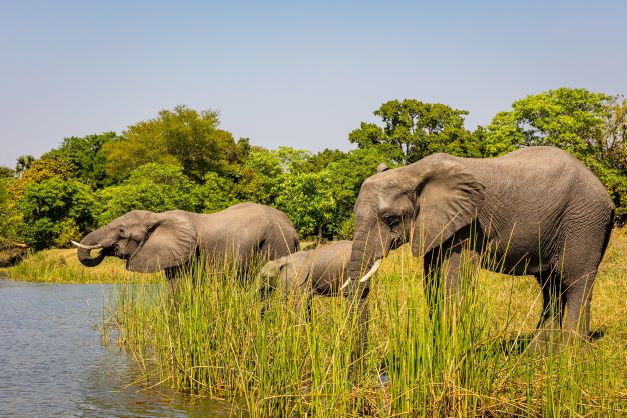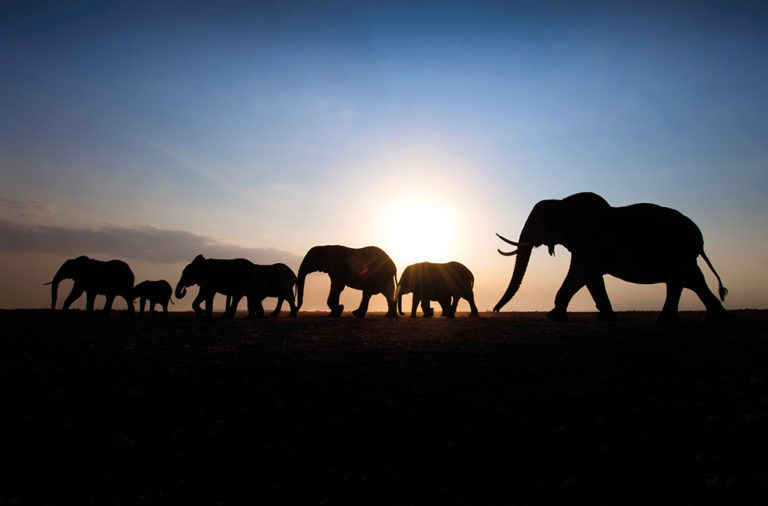[ad_1]
As natural spaces become smaller, human-wildlife conflict grows. The conflict between humans and elephants has increased as elephants enter human-inhabited environments.
Understanding elephant behaviour, and the reasons behind how and why they behave the way they do, is important for maintaining a safe environment for both people and elephants.
Head Ranger at Ivory Tree Game Lodge, Madél Marx, shares his insight into these powerful creatures.
READ: What to do in a potentially dangerous wildlife encounter

What causes conflict between humans and elephants?
- Loss of habitat
- Misunderstanding elephant behaviour
- Invading their personal space
And what causes loss of habitat?
- Loss of habitat is caused by the growing human population resulting in the need for more infrastructure.
- This results in destroying wilderness areas and green belts that are not considered protected areas, reducing the amount of space for all animals.
What are some examples of how humans misunderstand elephants and the consequences?
As elephants move peacefully through an area they inhabited first, humans sometimes see them as a dangerous threat; in some instances shouting and throwing objects at them, or even killing them. Elephants react defensively to situations they aren’t used to.

Ways humans can co-exist with elephants.
- By understanding the importance of elephants in our ecosystem and respecting their existence.
- Strong fencing. As the saying Good fences make good neighbours”.
- By educating communities who live on the periphery of wildlife reserves about the role elephants play and the long-term effects of wildlife and habitat loss.
What role do elephants play in Africa’s ecosystem?
- Elephants distribute seeds from the fruit or grass they eat (in fact, they transport seeds further than any other land mammal).
- They create a habitat for small animals such as rodents, insects and birds by pushing over trees.
- The trees elephants push over protect the soil and vegetation underneath from being trampled upon, creating a fertile area.
- They are responsible for opening thickets by pushing over trees when they become overgrown.
- During the dry season, they dig for water and the pools they create provide much-needed water for other animals.

What does invading an elephant’s personal space entail? How close is too close?
Getting too close for comfort. Between 5-15m is too close unless they approach you. Invading their space could also mean getting in between herd members when they’re crossing the road, for example.
How much space does an elephant typically need to live comfortably in its habitat?
An elephant’s home range can extend up to 11 000 square kilometres.
What are warning signs an elephant doesn’t feel safe around you?
- Ears out
- Trumpeting
- Throwing objects
- Warning charges
- Visible discomfort and anxiety
Three ways to interact with elephants that respect them and their habitat.
- Give them the space they need to move around comfortably in their habitat.
- Pay attention to warning signs and general behaviour.
- Always keep your noise level down, as they frighten easily.
What behaviour should you avoid when around elephants?
- Driving too close and entering their comfort zone.
- Coming between herd members and their young.
- Making a lot of noise (shouting, engine noise, and music playing).

Pictures: Getaway Gallery
Follow us on social media for more travel news, inspiration, and guides. You can also tag us to be featured.
TikTok | Instagram | Facebook | Twitter
ALSO READ: 4 winter safari specials you don’t want to miss
[ad_2]
Source link
Jarastyle – #reasons #humanelephant #conflict
Courtesy : https://www.getaway.co.za/travel-ideas/elephant-behaviour-the-reasons-behind-human-elephant-conflict/

